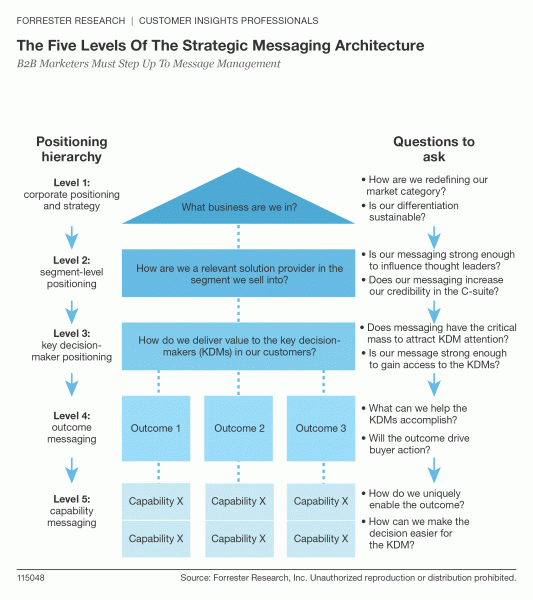Keeping Everybody “On Message”
Well, the 2016 US presidential race has begun in earnest. Every day a new candidate enters the race on the quest to headline the Republican or Democratic ticket. I am a bit of a political junkie: not because I am a policy wonk, but because I am a marketing wonk. I love (ok, sometimes hate) to watch the unfolding strategies to win the ‘hearts and minds’ of the electorate. What interests me most is the struggle to stay ‘on message’. The candidate wants the dialogue to be about the ‘brand message’: “Don’t Swap Horses When Crossing Streams”, Lincoln, 1864; “Return to Normalcy”, Harding, 1920; “Are you better off than you were 4 years ago”, Reagan, 1980; and, of course, “Yes, We Can” Obama, 2008. But, it’s tough. Political discourse requires a political platform of messages on issues and topics that are targeted to micro-constituencies. Political operatives, surrogates and donors can get it all terribly muddled. And when they inevitably do, the damage control often rises to an art form.
It’s something any B2B marketing exec can relate to. Keeping everybody on message is never an easy task. Despite the hours spent in claustrophobic conference rooms discussing mission and vision and value propositions, key stakeholders just seem to go rogue when communicating in practice: the CEO wings it in press interviews; the SVP of engineering explores the nuances of fascinating, but irrelevant features with a prospective buyer; marketing managers write content that misaligns benefits and customer problems; agencies propose promotional taglines that are slick but won't stick; and sales reps create their own special spiel (and use it faithfully regardless of client context).
It's a perennial problem, but it's increasingly important for B2B marketing leaders to address now because:
- Vendors don't control the communication flow anymore. Today's buyers control the buying process more than vendors control the selling process. In a recent survey, 74% of B2B buyers told Forrester they research half or more of their work purchases online. These buyers engage with vendors and peers though a multitude of digital, social, and mobile touch points.
- Content marketing increases content clutter. Most B2B marketers have adopted content marketing as a strategy to more successfully engage with today's self-directed, self-educating buyer. But, the effort to produce content that captures attention, creates interest, provides value, and delivers utility has been undermined by the disconnected perspective and unsynchronized goals of content creators in different organizational silos. The result? Mountains of content — produced haphazardly — increasing the chance of someone delivering the wrong message at the wrong time.
- Your brand promise can be undermined by point solution messaging. The strategic value that your entire company provides to your customers is important to executive decision-makers who are most often involved when B2B buying processes are initiated and when final decisions are made. Unfortunately, that strategic value can be obscured by the mass of content created as marketers respond to the very real need for contextual messaging and content marketing.
 At many levels in your company, well-meaning professionals are simply trying to deliver a message they feel will be most effective for a specific audience at a specific time. These individuals don't worry if the company is presenting a consistent message to its customers and constituencies, but B2B marketing leaders must wrestle with this challenge. Because communication can become muddled as different stakeholders (marketers, sales reps, or executives) engage with customers without the connective tissue of a strong messaging architecture.
At many levels in your company, well-meaning professionals are simply trying to deliver a message they feel will be most effective for a specific audience at a specific time. These individuals don't worry if the company is presenting a consistent message to its customers and constituencies, but B2B marketing leaders must wrestle with this challenge. Because communication can become muddled as different stakeholders (marketers, sales reps, or executives) engage with customers without the connective tissue of a strong messaging architecture.
That’s why I, along with my colleague, Sheryl Pattek, are getting such good uptake and feedback on our recent report, “B2B Marketers Must Step Up To Message Management”. In this report, we present a strategic messaging architecture (SMA) that B2B marketers can use to effectively create, manage, and operationalize the myriad messages that their organizations creates. The SMA starts with your top-line company and brand messages and is expanded with lower-level tiers to accommodate the messaging required for more detailed strategies, initiatives, programs, promotions, or organizational functions. Our new SMA framework will help you link your brand promise and contextually based customer engagement activities into a consistent messaging system.
- Corporate positioning and messaging provides "big tent coverage."
- Segment-level messaging clearly articulates the basis for segment leadership.
- Key decision-maker (KDM) messaging provides the basis for engagement.
- Outcome messaging delivers the driver of customer action.
- Capability messaging helps the buyer through a specific buying journey.
With the proliferation of digital, human, and social touchpoints, strategic message management is no longer a nice-to-have. It’s a must-have to both ensure a consistent customer experience and align your marketing and sales efforts for maximum revenue impact. Don’t let your team go off-message.
I’d love to hear your comments and perspectives about this critical marketing compentency. Please reach out to me via email on my blog or tweet me with your thoughts, challenges and ideas.
